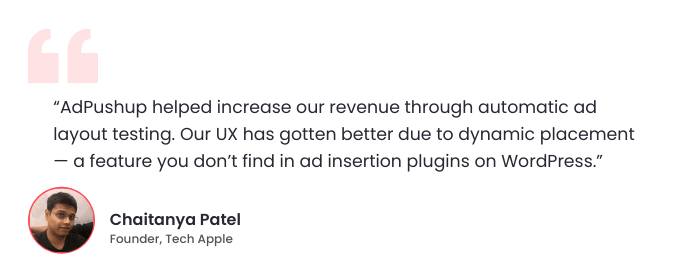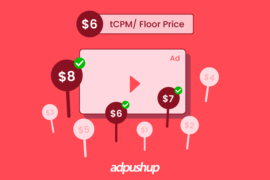Advertisers are always looking for the best space to display their ads. Publishers fulfill these needs by selling their ad inventory through multiple channels including header bidding, programmatic guaranteed, private marketplaces, and direct sales. Advertisers know that high-value inventory is the route to higher CPMs and better CTRs are therefore don’t want to settle for anything less than premium. This is where the value of ad inventory comes into play. For advertisers, the value of ad inventory is determined by the probability of getting conversions and sales.
On the other hand, for publishers, the value of ad inventory directly translates into how much revenue they can generate. But what can publishers do to understand the true value of their ad inventory?
How to Find the Value of Ad Inventory
Determining the actual value of ad inventory can help publishers understand if they’ve been selling it for the right price all this time—or if it’s undervalued. Here are some questions publishers should ask:
1. Where are the ads placed?
Ad placement can be divided into two segments: Above the Fold and Below the Fold. ATF ads are more viewable because of their prominent placement and offer higher chances of user interaction. Buyers know this and are ready to spend more on ATF inventory that yields better results. BTF ads, on the other hand, are usually a secondary preference when ATF ads are not available. The good part about BTF ads is that they bring in extra revenue on sites that have a good scroll depth or infinite scroll.
2. What ad sizes and ad types are used?
Certain display ad sizes like 300×600, 728×90, and 300×250 are known to outperform most others. When accompanied by the right placements, these ads get more clicks. This results in improved viewability, CPM, and CTR; buyers are therefore willing to pay more for these placements. Apart from static display ads, dynamic ad types like rich media ads garner more user attention thanks to their interactivity.

3. Where are the users located?
US traffic is regarded as most valuable for both publishers and advertisers, followed by other native English speaking countries. However, with time, local advertisers are now seeking inventory in other geographies too. Programmatic advertising (ad-buying technologies like RTB, programmatic direct, and others) has also given publishers access to more global demand.
4. What is the traffic source split?
Analyzing traffic sources is imperative to finding the value of the ad inventory. For example, a website with 80% direct, search, or organic traffic share can claim to have a high-value inventory. Users of this website are high-intent and will likely have a better time-on-site. Whereas a website with similar traffic but from social media or paid channels may not be valued as highly. Users from these sources come in through external triggers and are likely to bounce off sooner.
5. What is the average fill rate?
Ad requests that successfully convert to impressions prove advertiser interest in that website. Also, a high fill rate increases competition amongst buyers and results in higher bids for the publisher’s inventory.
6. What is the average viewability rate?
Publishers with high viewability score (active view impressions) for their ads have are considered to have a high-value inventory. The good part is that buyers understand this, and they are willing to pay more, knowing that they will get access to ad placements where their ads will actually be seen.
How to Improve the Value of Ad Inventory
- Compare the historical performance of different ad sizes. Usually, wider and larger ad sizes, as stated in one of the points above, tend to outperform smaller ones and hence get better CTR.
- Check if your current floor prices are too high, which may be restricting buyers from bidding on your ad inventory. Conversely, you can also reassess if there’s scope to increase floor prices.
- Analyze the most important website metrics viz. bounce rate, pageviews/session, and time-on-site. Healthy metrics indicate that your inventory is of high value.
- Find out about the goodwill of your website amongst buyers (ad networks, media buyers, advertisers)—do they find your content useful and relevant; is your user experience up to the mark; how good is your SEO game?
Conclusion
A lot of discussions happen around ad inventory and demand. But there is no universal consensus on which inventory can actually be called premium. Without any concrete qualification metric or eligibility criteria, the issue becomes subjective.
So, the only advice that makes sense for publishers is to improve the overall quality of their inventory in order to provide more value to buyers.
In this post, we have discussed ways for publishers to analyze their ad inventory on a granular level and perform the necessary actions to improve its value. Determining the value of ad inventory is the first step of a publisher’s revenue cycle, having a better insight into this will help you maximize your returns.

Shubham is a digital marketer with rich experience working in the advertisement technology industry. He has vast experience in the programmatic industry, driving business strategy and scaling functions including but not limited to growth and marketing, Operations, process optimization, and Sales.









1 Comment
Great blog and so informative and useful